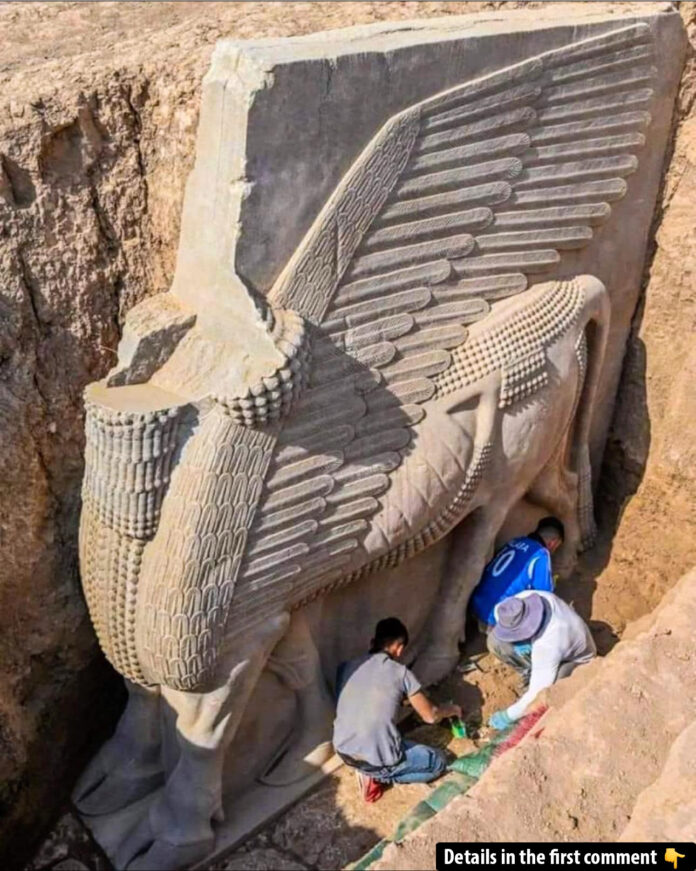In a remarkable archaeological breakthrough, a colossal 2,700-year-old winged Lamassu sculpture has been unearthed in northern Iraq. Found at the site of the ancient city of Khorsabad, this breathtaking relic of the Neo-Assyrian Empire shines a light on one of history’s most powerful civilizations. With its intricate craftsmanship, symbolic meaning, and turbulent journey through history, the Lamassu embodies the grandeur and resilience of Mesopotamian culture. This discovery is not just an archaeological triumph but also a testament to humanity’s enduring connection to its ancient past.
The Discovery of the Lamassu
On October 24, 2023, archaeologists led by French expert Pascal Butterlin uncovered a massive alabaster sculpture depicting the Lamassu, a protective deity with a human head, the body of a bull, and the wings of an eagle. Weighing an astonishing 18 tons and measuring 3.8 by 3.9 meters, the statue was found near Mosul at the Khorsabad archaeological site. Despite its age, the sculpture remained remarkably intact, missing only its head, which had been recovered from smugglers in the 1990s and is now housed in the Iraq Museum in Baghdad.
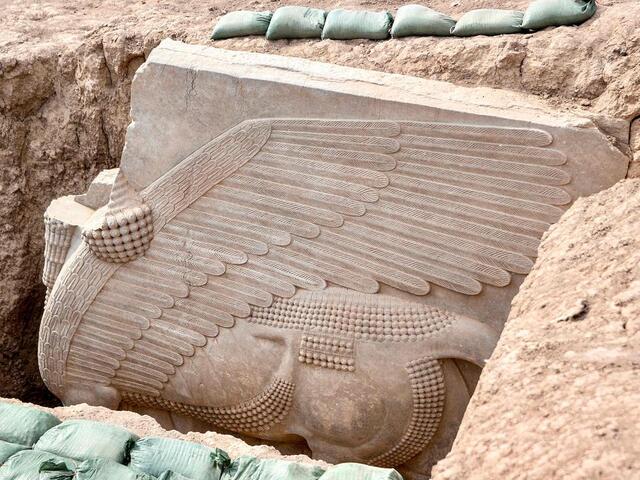
Butterlin, a professor of Middle Eastern archaeology, expressed his awe at the find, calling the attention to detail “unbelievable.” He noted that discovering a piece of such magnitude and craftsmanship outside of Egypt or Cambodia is extraordinarily rare, further underscoring its importance.
Video
Iraq has unearthed a 2,700-year-old winged sculpture, first discovered in the 80s – watch the video to explore this incredible ancient find and its historical significance!
Historical Context of Khorsabad and the Neo-Assyrian Empire
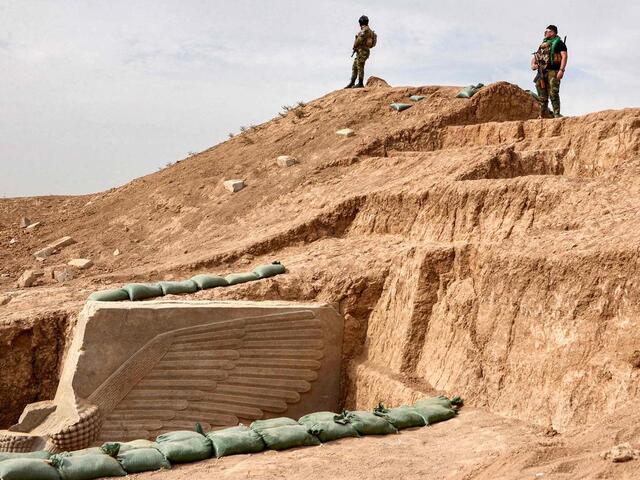
Khorsabad, or Dur-Sharrukin, served as the Assyrian capital during the reign of King Sargon II (722–705 BC). Strategically located 15 kilometers north of modern-day Mosul, it was a hub of political power and artistic innovation. The Lamassu, often stationed at city gates, symbolized protection, strength, and divine favor. These hybrid deities were believed to ward off evil while embodying human intelligence, animal strength, and celestial freedom.
The Neo-Assyrian Empire, spanning Mesopotamia, Armenia, and parts of Syria, was one of the ancient world’s most influential civilizations. Monuments like the Lamassu not only reinforced the empire’s power but also reflected its deep spiritual connection to the divine and the cosmos.
The Cultural and Architectural Significance of the Lamassu
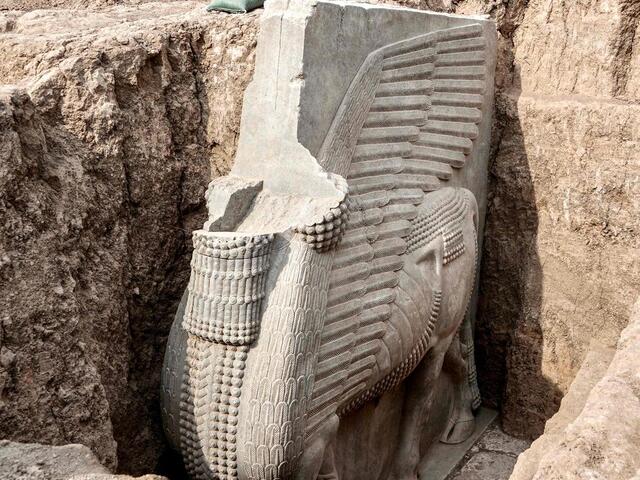
The Lamassu’s intricate craftsmanship speaks volumes about the advanced skills of Neo-Assyrian artists. From the detailed carving of feathers to the lifelike musculature of the bull’s body, every aspect of the sculpture exudes precision. Such attention to detail was not merely artistic but symbolic, conveying the Lamassu’s role as a vigilant guardian of the city.
Monumental sculptures like the Lamassu were more than decorative—they were integral to the architectural and spiritual fabric of ancient Assyrian cities. Positioned at entrances, these towering figures served as both physical and metaphysical barriers, protecting inhabitants and asserting the empire’s strength to visitors and invaders alike.
The Journey of the Lamassu Through History
The Lamassu discovered in Khorsabad has had a turbulent journey. First documented in the 19th century by French archaeologist Victor Place, the sculpture faded from public records until the 1990s when its head was recovered from smugglers. During the ISIS occupation of northern Iraq in 2014, local residents took extraordinary measures to protect the sculpture, hiding it from destruction before fleeing the area.
This act of preservation highlights the deep cultural pride and historical awareness of the local community. Their efforts ensured that the Lamassu survived not only the passage of time but also the ravages of modern conflict, standing as a symbol of resilience and heritage.
Mesopotamian Legacy: Influence and Rediscovery
The rediscovery of the Lamassu offers valuable insights into Mesopotamian art, religion, and society. As protectors of ancient cities, these sculptures encapsulated the values and beliefs of the Assyrians, who revered intelligence, strength, and divine intervention. Their influence extends beyond Mesopotamia, inspiring art and architecture across the ancient world.
This discovery also reignites interest in Mesopotamian history, reminding us of the region’s pivotal role in shaping human civilization. It serves as a reminder of the cultural and historical treasures that remain buried beneath modern landscapes, waiting to be unearthed.
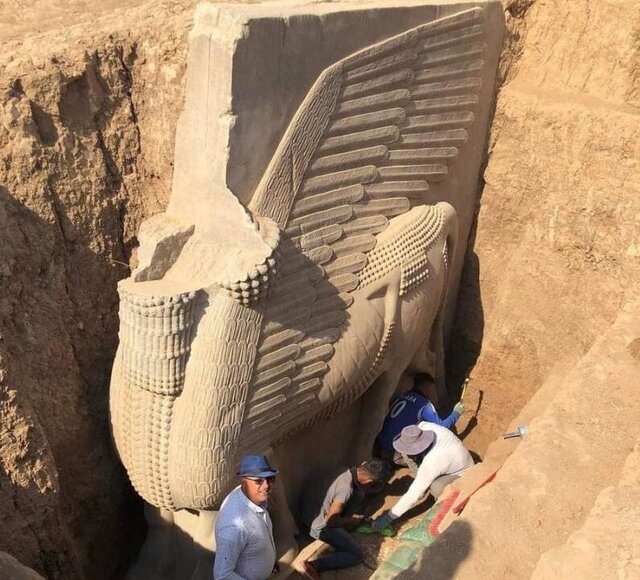
Challenges and Triumphs in Preserving Ancient Heritage
The rediscovery of the Lamassu highlights the challenges of preserving cultural heritage in conflict zones. Iraq, home to countless archaeological treasures, has faced decades of looting and destruction, particularly during times of war and political instability. The loss of artifacts to smugglers and the deliberate destruction of sites by groups like ISIS have underscored the urgent need for international cooperation in cultural preservation.
Despite these challenges, the Lamassu’s survival and rediscovery are triumphs of archaeological perseverance and local dedication. Efforts to protect and restore such artifacts are crucial not only for academic research but also for fostering global appreciation of humanity’s shared history.
Conclusion
The unearthing of the 2,700-year-old Lamassu in Khorsabad is more than an archaeological milestone—it is a bridge to the past, connecting us to the grandeur of the Neo-Assyrian Empire. As a masterpiece of craftsmanship and a symbol of cultural resilience, the Lamassu reminds us of the enduring power of history and art to inspire and educate. In preserving and celebrating such discoveries, we honor not only the legacy of ancient civilizations but also the shared human spirit that binds us across time.
